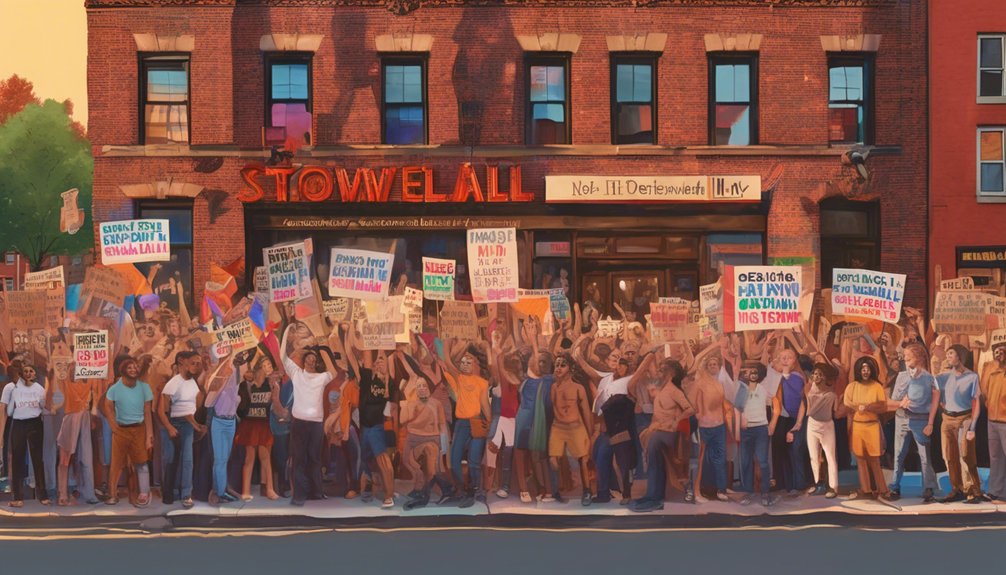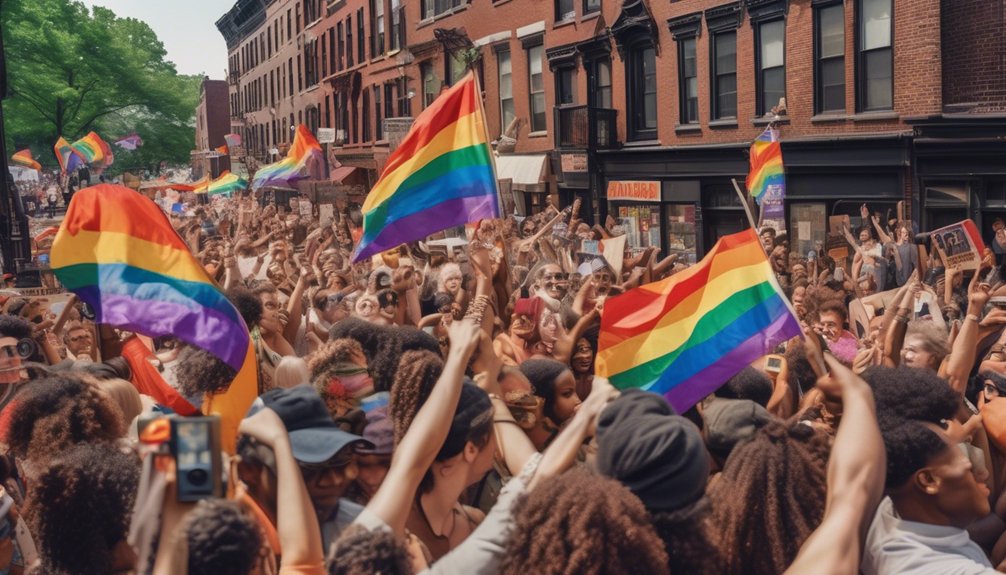Erasing Trans History? Debate Erupts Over Stonewall Website Revisions


Table of Contents
ToggleDid you know that over 40% of LGBTQ+ youth identify as transgender or non-binary? With recent changes to the Stonewall National Monument website, many feel these identities are being sidelined. You may be curious how these revisions impact the visibility of transgender history and its key figures. The debate raises significant questions about representation and historical accuracy. What does this mean for the future of LGBTQ+ narratives? Uncover more about the unfolding controversy.
Understanding the importance of transgender and queer representation in LGBTQ+ history is vital for preserving the integrity of the movement’s narrative. When you recognize the pivotal roles transgender individuals played, like Marsha P. Johnson and Sylvia Rivera during the Stonewall uprising, you appreciate their immense contributions to the fight for equality. Transgender activists have always been at the forefront, often facing disproportionate risks during police raids yet standing firm against oppression. By acknowledging their history, you guarantee their struggles and victories aren’t forgotten. Omitting “transgender” from narratives narrows your understanding of LGBTQ+ history, undermining the community’s diverse contributions. It’s your responsibility to advocate for accurate representation, honoring the legacy of those who paved the way for progress.

Recognizing the importance of transgender and queer representation naturally leads you to investigate the key figures of the Stonewall Uprising and their lasting contributions. Transgender activists like Marsha P. Johnson and Sylvia Rivera played essential roles in this pivotal moment. Marsha P. Johnson, known for her bravery, co-founded the Street Transvestite Action Revolutionaries (STAR), providing critical support to homeless transgender and LGBTQ+ youth. Sylvia Rivera tirelessly advocated for transgender rights, challenging their marginalization within the broader LGBTQ+ movement. Their actions during the Stonewall Uprising in 1969 were instrumental in resisting police raids and igniting a movement. This event marked the start of organized activism, ultimately leading to the initial Pride Parade in 1970, celebrating LGBTQ+ courage and resilience.
How did such significant changes come to the Stonewall National Monument website? The National Park Service revised the site, erasing references to transgender individuals. Words like “transgender” and “queer” were removed, shrinking the LGBTQ+ to just LGB. This change distorts history by ignoring the vital role transgender people played in the Stonewall Uprising. Pages about key figures like Marsha P. Johnson got edited, stripping their identities and reducing their impact. These revisions align with Executive Order 14168, which aims to define gender strictly as male or female. This erasure isn’t just about words; it’s a denial of transgender contributions to the LGBTQ+ movement. Such actions risk rewriting history and diminishing the ongoing fight for transgender rights in this age.
As the revisions to the Stonewall National Monument website stirred controversy, the community swiftly rallied to counteract the erasure of trans history. Over 1,000 people gathered in protest, demonstrating the power of community response. They displayed slogans like “No LGB without the T!” to emphasize the significant role transgender individuals played in the Stonewall uprising. Community leaders urged solidarity, calling attention to trans activists, especially women of color, who paved the way for LGBTQ rights. The Stonewall Inn Gives Back Initiative and other organizations condemned the changes, promising to fight against the erasure of trans history. Outside the Stonewall Inn, gatherings became a hub for voicing anger and organizing further protests against the political climate threatening trans rights during this time.
While the Stonewall website revisions may seem like a small change, they reflect a much larger issue. These changes are part of broader political efforts aimed at erasing transgender representation. Under Executive Order 14168, the Trump administration directed federal agencies to exclude transgender identities, affecting terminology across government platforms. This climate of exclusion isn’t just a bureaucratic adjustment; it’s a direct attack on transgender rights. Critics rightly see this as a systematic effort to undermine the visibility and contributions of transgender individuals. You can witness increased activism and community organizing as the trans community fights back, insisting on their rightful place in history. It’s vital to understand these political maneuvers as intentional attempts to silence and invalidate transgender voices.
You’re probably curious about who maintains the Stonewall National Monument‘s official website. It’s actually managed by the National Park Service (NPS). They’re responsible for providing the historical information and updates that you observe there. However, recent changes have sparked quite the discussion about how history is represented. It’s essential to stay informed and engaged, ensuring all voices and contributions in the LGBTQ+ community are recognized and honored.
You play an essential role in understanding the 1969 Stonewall Riots because transgender individuals, especially transgender women of color, were at the forefront. They bravely resisted police harassment and sparked a series of protests that became a turning point for LGBTQ+ rights. You can see their courage and leadership as the driving force behind this significant moment in history, inspiring future generations to fight for equality and justice for all identities.
During President Trump’s second term, you observed several executive orders impacting transgender rights. These included directives to remove “transgender” and “gender identity” references from federal websites, limiting trans individuals’ recognition and visibility. Furthermore, orders restricted transgender people’s access to services like healthcare and education. Such moves sparked outrage and protests, as many saw them as attempts to roll back hard-won LGBTQ+ rights and erase trans voices from public discourse.
You’re wondering if other national monuments are facing similar website revisions. You’d find that while some sites might experience changes, not all revisions target specific historical narratives. It’s essential to stay informed and vigilant, ensuring that all communities’ contributions remain recognized and celebrated. Engaging with advocacy groups, sharing your voice, and supporting inclusive representation help preserve the integrity of historical accounts across all national monuments. Keep the dialogue going!
When website alterations remove significant terms, they change how you learn about LGBTQ+ history. You might miss out on understanding the full story, especially the contributions of transgender and queer individuals. These changes can give you a skewed view, affecting your knowledge and perspective. It’s essential to have accurate resources so you can appreciate the rich diversity and struggles of the LGBTQ+ community. Stand up for accurate histories and inclusive education.
You’re witnessing a worrying wave of whitewashing that attempts to erase crucial elements of transgender history. The Stonewall website revisions aren’t just minor modifications; they’re a massive misstep in remembering the real revolutionaries like Marsha P. Johnson and Sylvia Rivera. Community cries echo loudly: “No LGB without the T!” Your voice is critical in this vibrant fight for visibility. Stand strong, speak up, and guarantee every letter in LGBTQ+ gets the recognition it deserves.
 Featured PostsNovember 24, 2025What Changes Can You Expect From Transitioning? (MTF)
Featured PostsNovember 24, 2025What Changes Can You Expect From Transitioning? (MTF) Featured PostsNovember 21, 2025From Uncertainty to Growth: Mastering Life Changes
Featured PostsNovember 21, 2025From Uncertainty to Growth: Mastering Life Changes News and AdvocacyNovember 21, 2025Doctor or Not? RFK Jr. Faces Backlash Over Affirming Care Study Endorsement
News and AdvocacyNovember 21, 2025Doctor or Not? RFK Jr. Faces Backlash Over Affirming Care Study Endorsement Fashion and ExpressionNovember 20, 2025Unspoken Signals: How Women Navigate Attention and Identity
Fashion and ExpressionNovember 20, 2025Unspoken Signals: How Women Navigate Attention and Identity